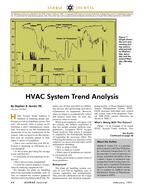Click here to purchase
As renewable energy resources, including wind and solar, continue to be further implemented and connected to the U.S. electric grid, the available energy produced will become more variable. Wind and solar energy resources are highly dependent on wind and solar radiation availability, which both, by nature, are highly varied in comparison to traditional electricity generation sources. With the increasing presence of variable generation, it is beneficial to grid reliability to also be able to modulate grid loads to match available generation. This can be accomplished through load participation in flexibility services (FS). This research focuses on collaborative efforts to develop a modeling framework to assess the impact of the use of a diversity of building load types for FS, on grid operations. These impacts include the cost of energy, and transmission and distribution investments. This framework uses a combination of building energy models and surveys on willingness of building customers to participate in FS, as input into a grid model built in GTD (generation-transmission-distribution) expansion planning software. This research specifically focuses the use of this framework for the MISO (Midcontinent Independent System Operator) region, however, the framework can be used for other regions for use in evaluating FS opportunities.
Citation: 2021 Virtual Extended Abstract Papers
Product Details
- Published:
- 2021
- Number of Pages:
- 4
- Units of Measure:
- Dual
- File Size:
- 1 file , 1.4 MB
- Product Code(s):
- D-VC-21A-A007
- Note:
- This product is unavailable in Belarus, Russia


